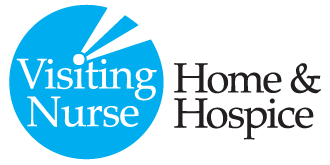Rehabilitation
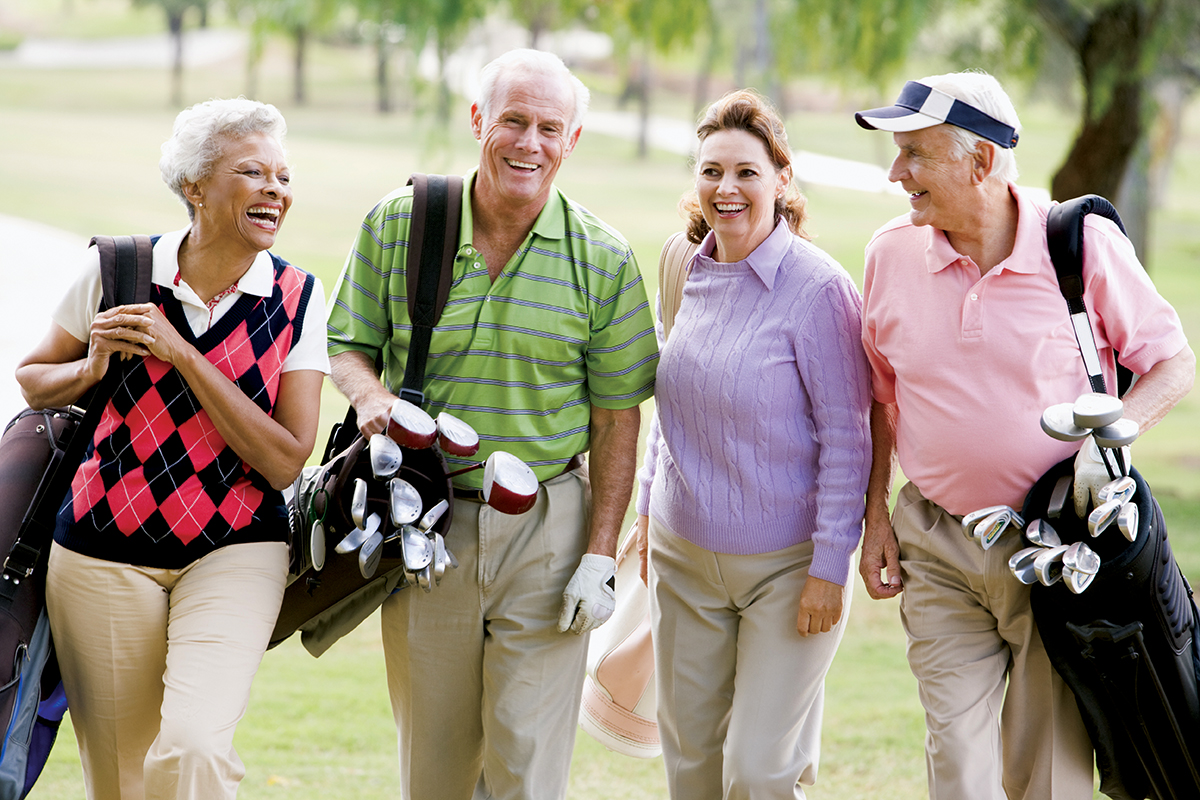
Check out links below for discussions of recovery after knee or hip replacements:
Knee Replacement
Hip Replacement
The Visiting Nurse Home & Hospice Rehabilitation Team helps patients regain their independence and achieve the goals they have set for mobility in the home. Upon returning home after a recent illness or operation, short term rehabilitation may be required to return to basic mobility and functioning. Rehabilitation therapists also educate family and caregivers on how to safely help you.
Rehabilitation Team
Physical Therapists – The PT works with patients to regain strength and balance through an exercise program involving large motor skills. They improve walking ability and assess the risk of accidental falls. They instruct how to use equipment, such as a walker.
Occupational Therapists – The OT instructs on activities of daily living, such as returning to independent meal preparation, bathing, and dressing. Focusing on fine motor skills, the OT also instructs on the use of adaptive equipment.
Speech Therapists – Focusing on voice, language and speech, the Speech Therapist provides help in the areas of swallowing and communication.
Registered Dietitians – Dietitians give nutrition advice for a period of inactivity, they analyze diets, and they educate on new eating habits and food preparation.
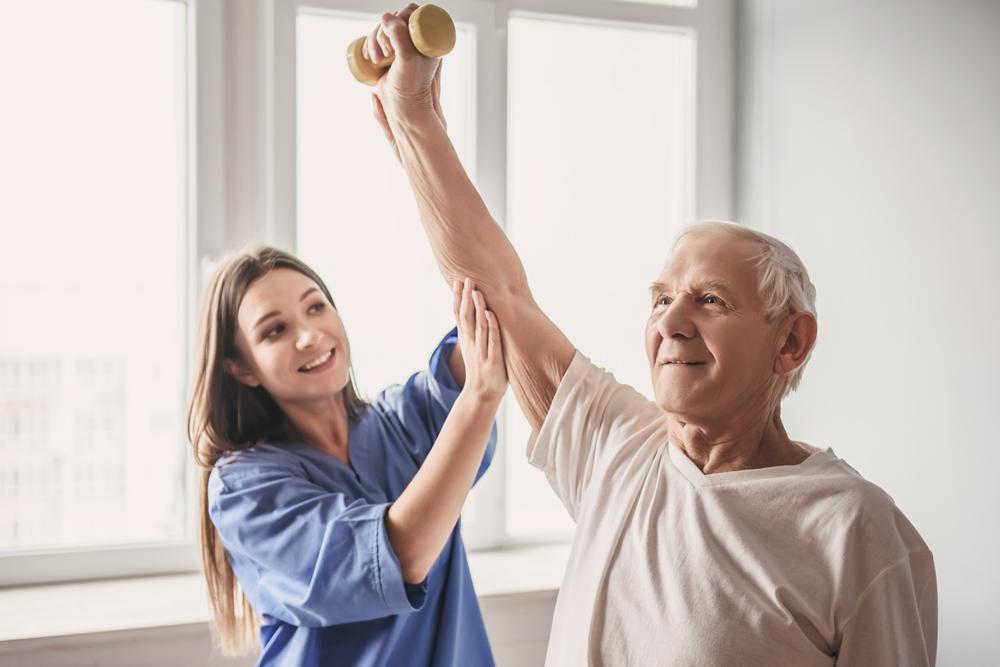
Stroke Team
The Visiting Nurse Home & Hospice Stroke Team is an interdisciplinary specialty team with expertise in the full recovery of victims of stroke. The team is composed of:
- Physical Therapist
- Occupational Therapist
- Speech Therapist
- Registered Nurse
- Social Worker
- Registered Dietitian
- Home Health Aide
Together the team works on objectives to aid the stroke survivor in coping
with life as it is and to work toward goals that they have. The Stroke Team works with local hospitals and out patient facilities to ease the transition of the stroke patient to out patient status.
In a larger scale, the Stroke Team is interested in education of ourselves, our colleagues, the patients, the patient’s caregivers, and any one who is interested in stroke and its prevention.
Remember: The National Stroke Association recommends you act FAST when you suspect a stroke:
Face – Ask the person to smile. Does one side of the face droop?
Arms – Ask the person to raise both arms. Does one arm drift downward?
Speech – Are their words slurred?
Time – Call 9-1-1 immediately.
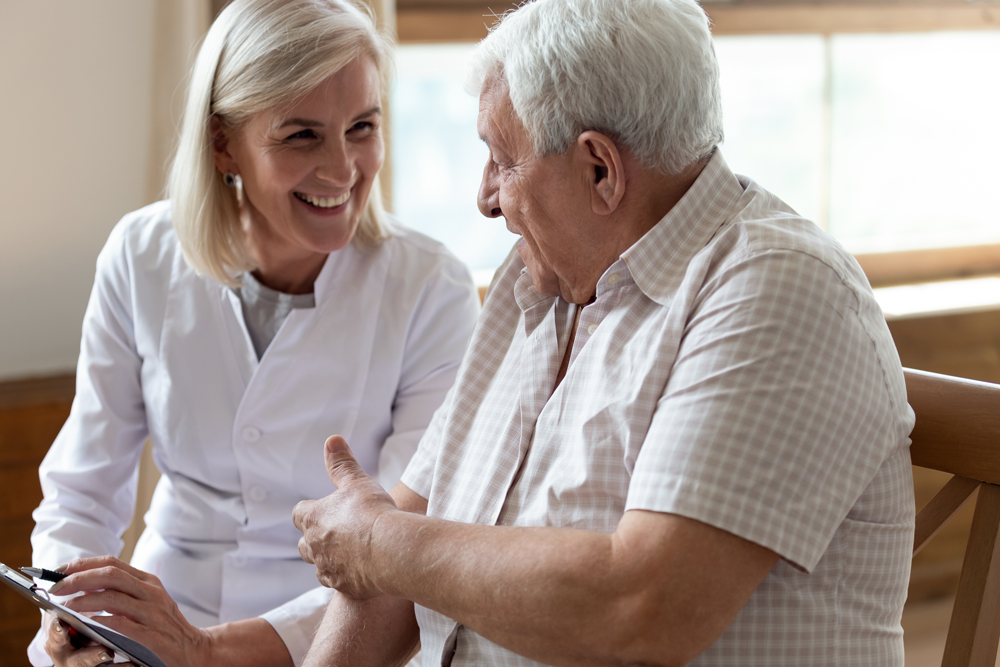
Parkinson’s Team
The Visiting Nurse Home & Hospice Parkinson’s Disease Specialty Team has 2 components: “LSVT – Big”, which is Physical and Occupational Therapy program focusing on increasing the “bigness” of movements in patients with Parkinson ’s disease. The second part is “LSVT-Loud”, which is the Speech Therapy component that focuses on loudness. The premise is that most clients with Parkinson’s Disease have smaller movements and softer speech, but they perceive themselves as normal. With the Big and Loud programs, we encourage them to change the way they move and speak. The VNS has 3 clinicians that attended a course in Connecticut and have become certified as LSVT providers.
What is LSVT LOUD?
LSVT LOUD® is an effective speech treatment for individuals with Parkinson disease (PD) and other neurological conditions. LSVT LOUD, named for Mrs. Lee Silverman (Lee Silverman Voice Treatment – LSVT) was developed in 1987 and has been scientifically studied for nearly 20 years with funding support from the National Institute for Deafness and other Communication Disorders (NIDCD) of the National Institutes of Health. Published research data support improvements in vocal loudness, intonation, and voice quality for individuals with PD who received LSVT LOUD, with improvements maintained up to two years after treatment. Recent research studies have also documented the effectiveness of this therapy in improving the common problems of disordered articulation, diminished facial expression and impaired swallowing. Additionally, two brain imaging studies have documented evidence of positive changes in the brain following administration of the therapy.
LSVT LOUD improves vocal loudness by stimulating the muscles of the voice box (larynx) and speech mechanism through a systematic hierarchy of exercises. Focused on a single goal “speak LOUD!” – the treatment improves respiratory, laryngeal and articulatory function to maximize speech intelligibility. The treatment does not train people for shouting or yelling; rather, LSVT LOUD uses loudness training to bring the voice to an improved, healthy vocal loudness with no strain.
What is LSVT BIG?
Recently principles of LSVT LOUD® were applied to limb movement in people with Parkinson disease (LSVT BIG®) and have been documented to be effective in the short term. Specifically, training increased amplitude of limb and body movement (Bigness) in people with Parkinson disease has documented improvements in amplitude (trunk rotation/gait) that generalized to improved speed (upper/lower limbs), balance, and quality of life. In addition, people were able to maintain these improvements when challenged with a dual task.
LSVT BIG can be delivered by a physical or occupational therapist. Treatment is administered in 16 sessions over a single month (four individual 60 minute sessions per week). This protocol was developed specifically to address the unique movement impairments for people with Parkinson disease. The protocol is both intensive and complex, with many repetitions of core movements that are used in daily living.
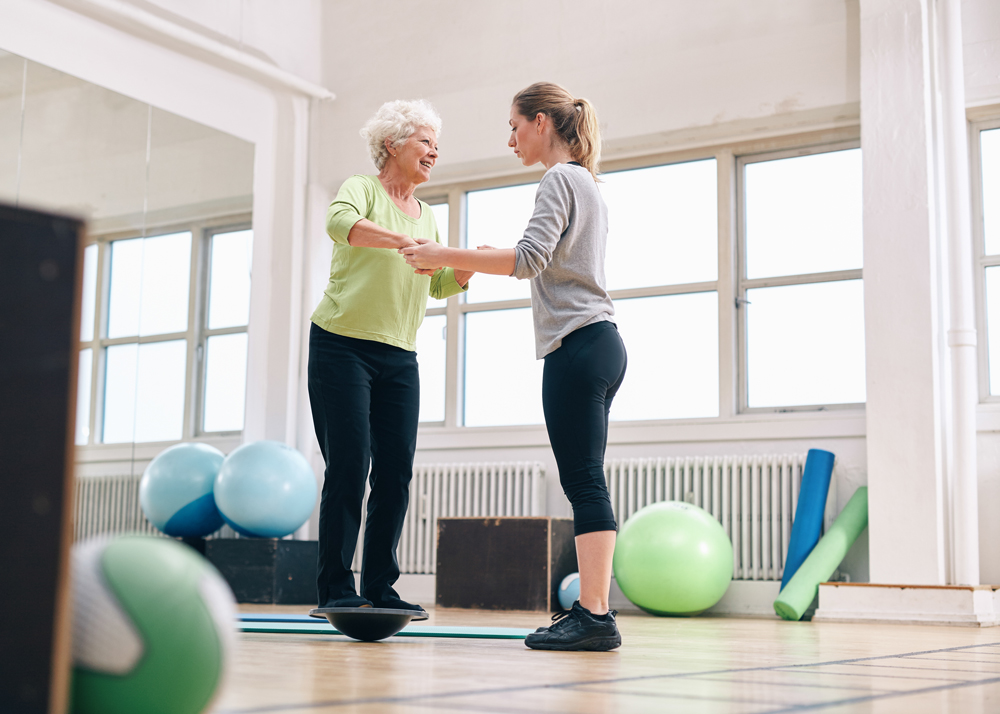
Vestibular Team
The Visiting Nurse Home & Hospice Vestibular Rehabilitation Team is a specialty team with expertise in a wide variety of balance disorders. Vestibular Rehabilitation is used to improve the problems resulting from vestibular dysfunction and central balance disorders. The goal is to decrease dizziness and/or vertigo, improve balance, and restore the individual’s previous quality of life. By decreasing the frequency, intensity and duration of dizziness or vertigo, symptoms such as headache, nausea and lightheadedness are decreased and independent mobility is improved.
The Vestibular Physical Therapists treat patients with dizziness and/or imbalance resulting from disorders including:
- BPPV
- Otolith Dysfunction
- Vestibular Labyrinthitis/Neuritis
- Acoustic Neurom
- Ototoxicity
- Meniere’s Disease
- Neurologic Disorders (stroke, brain injury, multiple sclerosis)
- Migraine Variant Vertigo
- Cervicogenic Dizziness
